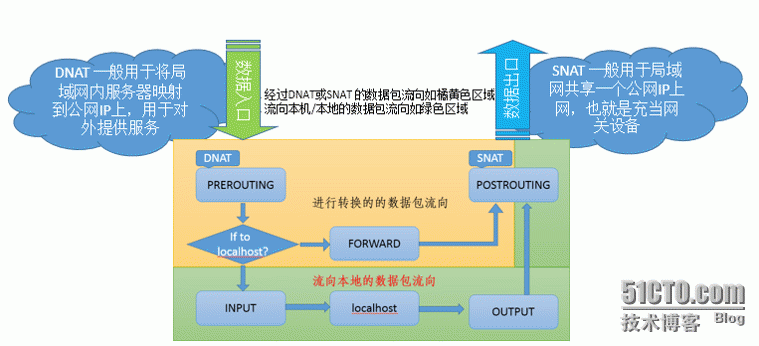Java Servlet是与平台无关的服务器端组件,运行于Servlet容器中(如Tomcat),Servlet容器负责Servlet和客户端的通信以及调用Servlet的方法,Servlet和客户端的通信采用“请求/响应”的模式。Servlet可完成以下功能:
1、创建并返回基于客户请求的动态HTML页面。
2、创建可以嵌入到现有HTML页面中的HTML片段。
3、与其它服务器资源(如数据库或基于Java的应用程序)进行通信。
4、接收多个客户端的输入,并将结果广播到多个客户端上,例如,Servlet可以实现支持多个参与者的游戏服务器。
5、根据客户请求采用特定的MIME(Multipurpose Internet Mail Extensions)类型对数据过滤,例如进行图像格式转换。
Servlet的框架由两个包组成:javax.servlet和javax.servlet.http。在javax.servlet包中定义了所有Servlet类必须实现或扩展的通用接口和类。在javax.servlet.http包中定义了采用HTTP协议通信的HttpServlet类。
Servlet框架的核心是javax.servlet.Servlet接口,所有的Servlet类都必须实现这个接口。Servlet接口定义的方法如下:
1、init方法,负责初始化Servlet对象。
2、service方法,负责响应客户端的请求。
3、destroy方法,当Servlet对象退出生命周期时,负责释放占用的资源。
4、getServletConfig方法,获得ServletConfig接口,可以得到Servlet的相关参数。
5、getServletInfo方法,获得Servlet的相关信息。
在javax.servlet包中,GenericServlet类实现了Servlet接口,在javax.servlet.http包中,HttpServlet类扩展了GenericServlet
类。当用户开发自己的Servlet时,必须扩展以上两个类中的一个,如果扩展自GenericServlet类,则必须自己实现service方法,
如果扩展自HttpServlet类,则不需要自己实现service方法,因为HttpServlet类已经实现了该方法。

GenericServlet类的service方法是一个抽象方法,只有两个参数:ServletRequest和ServletResponse。HttpServlet类的service方法也只有两个参数:HttpServletRequest和HttpServletResponse。HttpSevletRequest接口和HttpResponse接口分别扩展自ServletRequest和ServletResponse接口,都提供了与特定协议HTTP相关的数据。
ServletRequest接口的方法如下:
getAttribute 获得属性值
getContentType 获得客户请求数据的MIME类型。
getInputStream 获得可以读取客户请求数据的输入流。
getParameter 获得参数值
getRemoteAddr 获得客户端的IP
getRemoteHost 获得客户端的主机名
getRemotePort 获得客户端的端口
setAttribute 设置属性值。
ServletResponse接口的方法如下:
getOutputStream 获得可以向客户羰发送二进制数据的输出流对象ServletOutputStream
getWriter 获得可以向客户端发送字符数据的PrintWriter对象
getCharacterEncoding 获得Servlet发送的响应数据的字符编码
getContentType 返回Servlet发送的响应数据的MIME类型
setCharacterEncoding 设置Servlet发送的响应数据的字符编码。
setContentType 设置Servlet发送的响应数据的MIME类型。
Servlet的init方法有如下两种形式:
public void init(ServletConfig config) throws ServletException
public void init() throws ServletException
在Servlet的初始化分阶段,Servlet容器会为Servlet创建一个ServletConfig对象,用来存放Servlet的初始化配置信息,如Servlet的初始参数。如果Servlet覆盖了带参数的init方法,则必须在函数体内先调用super.init(config); 以确保config参数引用了ServletConfig对象。如果Servlet覆盖了没有带参数的init方法,则不需要调用super.init(); 方法,可以通过调用getServletConfig()方法来获得ServletConfig对象。
Servlet容器会为Web应用创建一个唯一的全局的ServletContext对象,可以把它看成是一个Web应用的服务器端组件的共享内存。它有如下方法:
etAttribute(String name,Object obj) 将一个对象与一个属性名绑定,并存放到
ServletContext中
getAttribute(String name) 获得指定名称的属性值。
removeAttribute(String name) 删除指定名称的属性。
getAttributeNames() 返回所有属性名的一个Enumeration对象。
getInitParameter(String name) 获得指定名称的参数值,该参数是Web应用的初始化参数.
getInitParameterNames() 返回Web应用的所有初始化参数的名称的Enumeration对象.
getMimeType(String file) 返回文件的MIME类型.
getRealPath(String path) 返回网络路径path对应的文件系统路径.
getServerInfo() 返回Servlet容器的名称和版本
注意: 一般在HptpServlet的子类中,将doPost方法的实现合并到doGet方法中,也就是在doPost方法中简单地调用doGet方法.因为一般情况下对于Get和Post请求,它们都是一样的处理.
编译了Servlet后,将它打包成jar放到WEB-INF/lib目录下,或将Servlet的class文件放到WEB-INF/classes/目录下,再在WEB-INF/web.xml配置文件中配置这些servlet,就可以在Web应用中访问servlet了,配置如下:
<servlet>
<servlet-name>my_servlet</servlet-name>
<servlet-class>com.mycompany.ServletClass1</servlet-class>
< init-param> <!--定义servlet的初始化参数, 可以有多个init-param参数-->
< param-name>iParam< /param-name>
< param-value>2< /param-value>
< /init-param>
< load-on-startup>2< /load-on-startup> <!--定义servlet的加载顺序-->
</servlet>
<servlet-mapping>
<servlet-name>my_servlet</servlet-name>
<url-pattern>*.hello</url-pattern>
</servlet-mapping>
Session相关
在Servlet API中定义了javax.servlet.http.HttpSession接口,Servlet容器必须实现这一个接口。当一个Session开始时,Servlet容器将创建一个HttpSession对象,在HttpSession对象中可以存放客户状态的信息。Servlet容器为HttpSession对象分配一个唯一的标识符,叫做Session ID,Servlet容器把Session ID作为Cookie保存在客户的浏览器中,每次客户发出HTTP请求时,Servlet容器可以从HttpRequest对象中读取Session ID,然后根据Session ID找到相应的HttpSession对象,从而获得客户的状态信息。HttpSession接口有如下方法:
getId() 返回Session ID
invalidate() 使当前的Session失效,Servlet容器会释放HttpSession对象占用的资源。
setAttribute(String name,Object obj) 将一对name/value属性保存到HttpSession对象中。
getAttribute(String name) 返回名字为name的属性值。
getAttributeNames() 返回HttpSession对象中所有的属性名。
isNew() 判断这个Session是不是新创建的。
setMaxInactiveInterval() 设定Session可以处于不活动状态的最大时间(以秒为单位), 超过这个时间,Session就会自动失效,如果设置为负数,则不 限制Session的不活动状态时间。
getMaxInactiveInterval() 返回Session可以处于不活动状态的最大时间。
当客户第一次访问Web应用中支持Session的某个页面时,就会开始一个新的Session,接下来,当客户浏览这个Web应用的其它页面时,始终处于同一个Session中。以下情况之一,Session就会失效:
1、客户端关闭浏览器。
2、Session过期,即客户在指定的最大时间内没有与Web服务器交互。
3、服务器端调用了HttpSession的invalidate()方法。
如果客户端浏览器不支持或禁用Cookie,则Servlet容器无法从客户端浏览器中取得作为Cookie的Session ID,也就无法跟踪客户的状态,因此客户端的每次请求支持Session的JSP页面时,Servlet容器都会创建一个新的HttpSession对象。对于这种情况,需要通过HttpServletResponse的encodeURL()方法重写客户请求的URL,它把Session ID添加到URL信息中,也就是说,对于支持Session的JSP页面中的所有连接URL,都要调用encodeURL()方法来重写这些URL,例如:
对于<a href=”login.jsp”/>应该改为<a href=”<%=response.encodeURL(“login.jsp”)%>”/>
这样,即使客户禁用Cookie,也能使用Session来跟踪客户的状态信息了。
Session的持久化:
Session的持久化就是将HttpSession对象从内存中转移到文件系统或数据库中,这样做的好处是:减少系统资源的占用,如果Servlet容器突然关闭或重启,或Web应用重启,这些持久化了的HttpSession对象可以再重新加载进来,对于客户端,还是使用同一个Session。
Session的持久化是由Session Manager来管理的,Tomcat提供了两个实现类:
l org.apache.catalina.session.StandarManager
l org.apache.catalina.session.PersistentManager
1、StandarManager是默认的Session Manager。它的实现机制是:当Tomcat服务器关闭或重启,或Web应用被重新加载时,会将内存中所有的HttpSession对象保存到文件系统中,默认的文件路径是:%CATALINA_HOME%\work\Catalina\<applicaton-name>\SESSIONS.ser
重启Tomcat后,Tomcat服务器把SESSIONS.ser中的持久化HttpSession对象加载到内存中。
2、PersistentManager能够把HttpSession对象保存到Session Store中,它提供了比较StandarManager更灵活的管理功能,具有容错能力,控制内存中HttpSession对象的数目等。
Tomcat实现Session Store的接口为org.apache.catalina.session.Store,目前提供了两个实现这一接口的类:org.apache.catalina.session.FileStore和org.apache.catalina.session.JDBCStore。FileStore会将HttpSession对象保存到文件系统中;而JDBCStore则将HttpSession对象保存到数据库表中。
下面给出这两个类的配置:
配置FileStore:
在server.xml中,在Web应用的<Context>元素加入<Manager>元素,例如:
<Context path=”/helloapp” docBase=”helloapp” debug=”0” reloadable=”true”>
<Manager className=”org.apache.catalina.session.PersistentManager”>
debug=0;
saveOnRestart=”true”
maxActiveSessions=”-1”
minIdleSwap=”-1”
maxIdleSwap=”-1”
maxIdleBackup=”-1”
<Store className=”org.apache.catalina.session.FileStore” directory=”mydir”/>
</Manager>
</Context>
|
属性 |
作用 |
|
className |
指定Session Manager的实现类名,或Session Store的实现类名 |
|
debug |
设定Session Manager采用的跟踪级别,取值0到99,越小越跟踪信息越少,发布产品时,应该设置为0,以提高性能。 |
|
saveOnRestart |
如果为true,则当Tomcat关闭时,所有的有效HttpSession对象都保存到Session Store中;当Tomcat重启时,加载这些HttpSession对象。 |
|
maxActiveSessions |
设置处于活动状态的Session的最大数目,如果超过这一数目,Tomcat把一些超过的Sessin对象保存到Session Store中。-1表示不限制。 |
|
minIdleSwap |
Session处于不活动状态的最小时间,单位为秒,超过这一时间,Tomcat有可能把这个Session对象移到Session Store中。 |
|
maxIdleSwap |
Session处于不活动状态的最大时间,超过这一时间,Tomcat就一定会将这个Session对象移到Session Store中。 |
|
maxIdleBackup |
Session处于不活动状态的最大时间,超过这一时间,Tomcat就就会将这个Session对象拷贝到Session Store中进行备份。 |
|
directory |
指定Session Store在哪个文件系统目录下存放持久化的Session对象的信息,文件名是Session ID.session。 |
配置JDBCStore:
在server.xml中,在Web应用的<Context>元素加入<Manager>元素,例如:
<Context path=”/helloapp” docBase=”helloapp” debug=”0” reloadable=”true”>
<Manager className=”org.apache.catalina.session.PersistentManager”>
debug=0;
saveOnRestart=”true”
maxActiveSessions=”-1”
minIdleSwap=”-1”
maxIdleSwap=”-1”
maxIdleBackup=”-1”
<Store className=”org.apache.catalina.session.JDBCStore”
driverName=”com.mysql.jdbc.Driver”
connectionURL=”jdbc:mysql://localhost:3306/demo?user=root password=1234”
sessionTable=”tomcat_sessions”
sessionIdCol=”session_id”
sessionDataCol=”session_data”
sessionValidCol=”session_valid”
sessionMaxInactiveCol=”max_inactive”
sessionLastAccessedCol=”last_access”
sessionAppCol=”app_name”
checkInterval=”60”
debug=”0”
/>
</Manager>
</Context>
说明:上面的元素属性的含义与FileStore的相同,上面的配置假设在MySQL服务器上的demo数据库的tomcat_sessions表中存放持久化Session对象的信息,这个表的结构如下:
CREATE TABLE tomcat_sessions(
session_id VARCHAR(10) NOT NULL PRIMARY KEY,
session_data MEDIUMBLOB,
session_valid CHAR(1) NOT NULL,
max_inactive INT NOT NULL,
last_access BIGINT NOT NULL,
app_name VARCHR(255),
KEY kapp_name(app_name)
);
Filter相关
Servlet过滤器是在Java Servlet规范2.3中定义的,它能够对Servlet容器的请求和响应对象进行检查和修改,它在Servlet被调用之前检查Request对象,修改Request Header和Request内容;在Servlet被调用之后检查Response对象,修改Response Header和Response内容。Servlet过滤器负责过滤的Web组件可以是Servlet、JSP或HTML文件,具有以下特点:
l Servlet过滤器可能检查和修改ServletRequest和ServletResponse对象
l 可以指定Servlet过滤器和特定的URL关联,只有当客户请求访问此URL时,才会触发该过滤器工作
l 多个Servlet过滤器可以被串联起来,形成管道效应,协同修改请求和响应对象
l 所有支持Java Servlet规范2.3的Servlet容器,都支持Servlet过滤器
所有的Servlet过滤器类都必须实现javax.servlet.Filter接口。该接口定义了以下3个方法:
l init(FilterConfig) 这是Servlet过滤器的初始化方法,Servlet容器创建Servlet过滤器实例后就会调用这个方法。在这个方法中可以通过FilterConfig来读取web.xml文件中Servlet过滤器的初始化参数。
l doFilter(ServletRequest, ServletResponse, FilterChain) 这是完成实际的过滤操作的方法,当客户请求访问与过滤器关联的URL时,Servlet容器先调用该方法。FilterChain参数用来访问后续的过滤器的doFilter()方法。
l destroy() Servlet容器在销毁过滤器实例前调用该方法,在这个方法中,可以释放过滤器占用的资源。
下面是一个过滤器的例子,它可以拒绝列在黑名单上的客户访问留言簿,而且能将服务器响应客户请求所花的时间写入日志:
//WEB-INF/classes/NoteFilter.class
import java.io.*;
import javax.servlet.*;
import javax.servlet.http.*;
public class NoteFilter implements Filter{
private FilterConfig config=null;
private String blackList=null;
public void init(FilterConfig config)throws ServletException{
this.config=config;
blackList=config.getInitParameter(“blacklist”);
}
public void destroy(){
config=null;
}
public void doFilter(ServletRequest request, ServletResponse response, FilterChain chain)
throws IOException, ServletException{
String userName=((HttpServletRequest)request).getParameter(“user_name”);
if(userName!=null)
userName=new String(userName.getBytes(“ISO-8859-1”),”GB2312”);
if(userName!=null && userName.indexOf(blackList)!=-1){
PrintWriter out=response.getWriter();
out.print(“<html><body>”);
out.print(“<h1>对不起,”+userName+”,你没有权限留言</h1>”);
out.print(“</body></html>”);
out.flush();
return;
}
long before=System.currentTimeMillis();
config.getServletContext().log(“NoteFilter:before call chain.doFilter()”);
chan.doFilter(request, response);
config.getServletContext().log(“NoteFilter:after call chain.doFilter()”);
logn after=System.currentTimeMillis();
String name=””;
if(request instanceof HttpServletRequest)
name=((HttpServletRequest)request).getRequestURL();
config.getServletContext().log(“NoteFilter:”+name+”:”+(after-before)+”ms”);
}
}
发布Servlet过滤器,必须在web.xml文件中加入<filter>和<filter-mapping>元素,如下:
<filter>
<filter-name>NoteFilter</filter>
<filter-class>NoteFilter</filter-class>
<init-param>
<param-name>blackList</param-name>
<param-value>捣蛋鬼</param-value>
</init-param>
<filter>
<filter-mapping>
<filter-name>NoteFilter</filter-name>
<url-pattern>/note</url-pattern>
</filter-mapping>
多个过滤器可以串连起来协同工作,Servlet容器将根据它们在web.xml中定义的先后顺序,依次调用它们的doFilter()方法。而这些过滤之间的关系不需要任何配置。
Listener的作用类似于load-on-startup的Servlet,在Web应用启动时被加载,在Web应用关闭时被销毁,Listener用来作为Web应用的后台服务,比load-on-startup的Servlet更早被加载到Servlet容器中。自定义的Listener类必须实现ServletContextListener接口,并实现该接口的两个方法:contextInitialized(ServletContextEvent)和contextDestroyed(ServletContextEvent),例如:
public class GetConnListener implements ServletContextListener{
public void contextInitialized(ServletContextEvent sce){
try{
ServletContext application=sce.getServletContext();
String driver=application.getInitParameter("driver");
String url=application.getInitParameter("url");
String user=application.getInitParameter("user");
String password=application.getInitParameter("password");
Class.forName(driver);
Connection conn=DriverManager.getConnection(url, user, password);
application.setAttribute("conn", conn);
}catch(Exception e){
System.out.println("Listener中获取数据库连接出现异常:"+e.getMessage());
}
}
public void contextDestroyed(ServletContextEvent sce){
ServletContext application=sce.getServletContext();
Connection conn=(Connection)application.getAtrribute("conn");
if(conn!=null){
try{
conn.close();
conn=null;
}catch(Exception e){}
}
}
}
Listener配置:
<listener>
<listener-class>lee.GetConnListener</listener-class>
</listener>
自定义JSP标签库
实现自定义标签的处理类
JSP容器编译JSP网页时,遇到自定义标签,就会调用这个标签的处理类。标签处理类必须扩展自javax.servlet.jsp.TagSupport类或javax.servlet.jsp.BodyTagSupport类。
1、TagSupport类的主要方法如下:
l doStartTag JSP容器遇到自定义标签的起始标志时调用该方法。
l doEndTag JSP容器遇到自定义标签的结束标志时调用该方法。
l setValue(String k, Object v) 在标签处理类中设置key/value。
l getValue(String k) 在标签处理类中获得key对应的value。
l removeValue(String k) 在标签处理类中删除key/value。
l setPageContext(PageContext pc) 设置PageContext对象,由JSP容器在调用doStartTag或doEndTag方法之前调用。
l setParent(Tag t) 设置该标签的上层标签的处理类,由JSP容器在调用doStartTag或 doEndTag方法之前调用。
l getParent() 返回该标签的上层标签的处理类。
2、TagSupport类有两个重要属性:
l parent 该标签的上层标签的处理类。
l pageContext Web应用中的javax.servlet.jsp.PageContext对象,提供了保存和访问Web应用的共享数据方法:setAttribute(String name, Object value, int scope)和getAttribute(String name, int scope)。其中scope参数用来指定属性存在的范围,可选值有:PageContext.PAGE_SCOPE、PageContext.REQUEST_SCOPE、PageContext.SESSION_SCOPE和PageContext.APPLICATION_SCOPE。
注意:在TagSupport的构造函数中不能访问pageContext成员,因为此时JSP容器还没有调用setPageContext 方法对pageContext进行初始化。
3、处理标签的方法:
当JSP容器遇到自定义标签的起始标志时,就会调用该标签处理类的doStartTag()方法。doStartTag()方法返回一个整数值,用来决定程序的后续流程,有两个可选值:Tag.SKIP_BODY和Tag.EVAL_BODY_INCLUDE。Tag.SKIP_BODY表示标签之间的内容被忽略,例如:
<prefix:mytag>
Hello World!
</prefix:mytag>
如果这个标签的处理类的doStartTag()方法返回Tag.SKIP_BODY,则Hello World!字符串不会显示在网页上。Tag.EVAL_BODY_INCLUDE表示标签之间的内容会被处理。
当JSP容器遇到自定义标签的结束标志时,就会调用该标签处理类的doEndTag()方法。doEndTag()方法也返回一个整数值,表示程序的后续流程,也是有两个可选值:Tag.SKIP_PAGE和Tag.EVAL_PAGE。Tag.SKIP_PAGE表示立刻停止执行JSP页面,该标签的结束标志之后的所有页面内容全部会初忽略,任何已有的输出内容立刻返回到客户的浏览器上;Tag.EVAL_PAGE表示按正常的流程继续执行JSP页面的内容。
4、自定义标签的属性
例如:<prefix:mytag attribute1=”value1”>…</prefix:mytag>
那么在标签处理类中必须将这个属性作为类的成员变量,并且必须提供相应的getter和setter方法,例如:
private int attribute1;
public void setAttribute1(int value){ attribute1=value;}
public int getAttribute1(){return attribute1;}
以下是一个自定义标签<message>的处理类的例子:
// WEB-INF/classess/mypack/MessageTag.class
package mypack;
import javax.servlet.jsp.JspException;
import javax.servlet.jsp.JspTagException;
import javax.servlet.jsp.TagSupport;
import javax.servlet.http.HttpSession;
import java.util.Properties;
import java.io.*;
public class MessageTag extends TagSupport{
private String key=null;
public MessageTag(){}
public void setKey(String key){
this.key=key;
}
public String getKey(){
return key;
}
public int doEndTag() throws JspException{
try{
pageContext.getOut.print(key);
}catch(Exception e){
throw new JspTagException(e.getMessage());
}
return SkIP_BODY;
}
public void release(){
super.release();
}
}
创建标签库描述文件(Tag Library Descriptor, TLD)
TLD文件中的元素可分为3类:
l <taglib>元素用来设置标签库的相关信息,它有如下属性:
tlibversion 指定标签库的版本
jspversion 指定JSP的版本
shortname 指定标签库默认的前缀名(prefix)
uri 设置标签库的唯一访问标示符
info 标签库的说明信息
l <tag>元素用来定义一个标签,它的属性如下:
name 标签的名字
tagclass 标签的处理类
bodycontent 标签主体(body)的内容
info 标签的说明信息
说明:bodycontent属性有3个可选值:empty、JSP和tagdependent。empty表示标签没有主体,JSP表示标签的主体中可以加入JSP代码,tagdependent表示标签的主体的内容由标签的处理类自己去处理。
l <attribute>元素用来定义标签的属性,它有如下属性:
name 属性名
required 该属性是否必须,默认是false
rtexprvalue 该属性的值是否可能通过”<%=…%>”的方式获得,当设置为true时,该属性就可以采用如下的方式设置值:<% int num=1;%> <prefix:mytag attribute1=”<%=num%>”/>
以下是一个标签库描述文件的例子:
<!--WEB-INF/mytag.tld-->
<?xml version=”1.0” encoding=”ISO-8859-1”?>
<!DOCTYPE taglib PUBLIC “-//Sun Microsystems,Inc.//DTD JSP TagLibrary 1.1//EN”
“http://java.sun.com/j2ee/dtds/web-jsptaglibrary_1_1.dtd”>
<taglib>
<tlibversion>1.0</tlibversion>
<jspversion>1.1</jspversion>
<shortname>mytaglib</shortname>
<uri>/mytaglib</uri>
<tag>
<name>message</name>
<tagclass>mypack.MessageTag</tagclass>
<bodycontent>empty</bodycontent>
<info>produce message by key</info>
<attribute>
<name>key</name>
<required>true</required>
<rtexprvalue>true</rtexprvalue>
</attribute>
</tag>
</taglib>
在web.xml文件中加入标签库的定义
<taglib>
<!--标签库的唯一标示符,与标签库描述文件中的<uri>元素的内容相同,在JSP页面中,也要通过这个定义来使用标签库-->
<taglib-uri>/mytaglib</taglib-uri>
<!--指定标签库描述文件所在的位置-->
<taglib-location>/WEB-INF/mytaglib.tld</taglib-location>
</taglib>
在JSP页面中使用自定义的标签
例如:
<%@ taglib uri=”/mytaglib” prefix=”mm”%>
<html>
<body>
<mm:message key=”hello world!”/>
</body>
</html>






